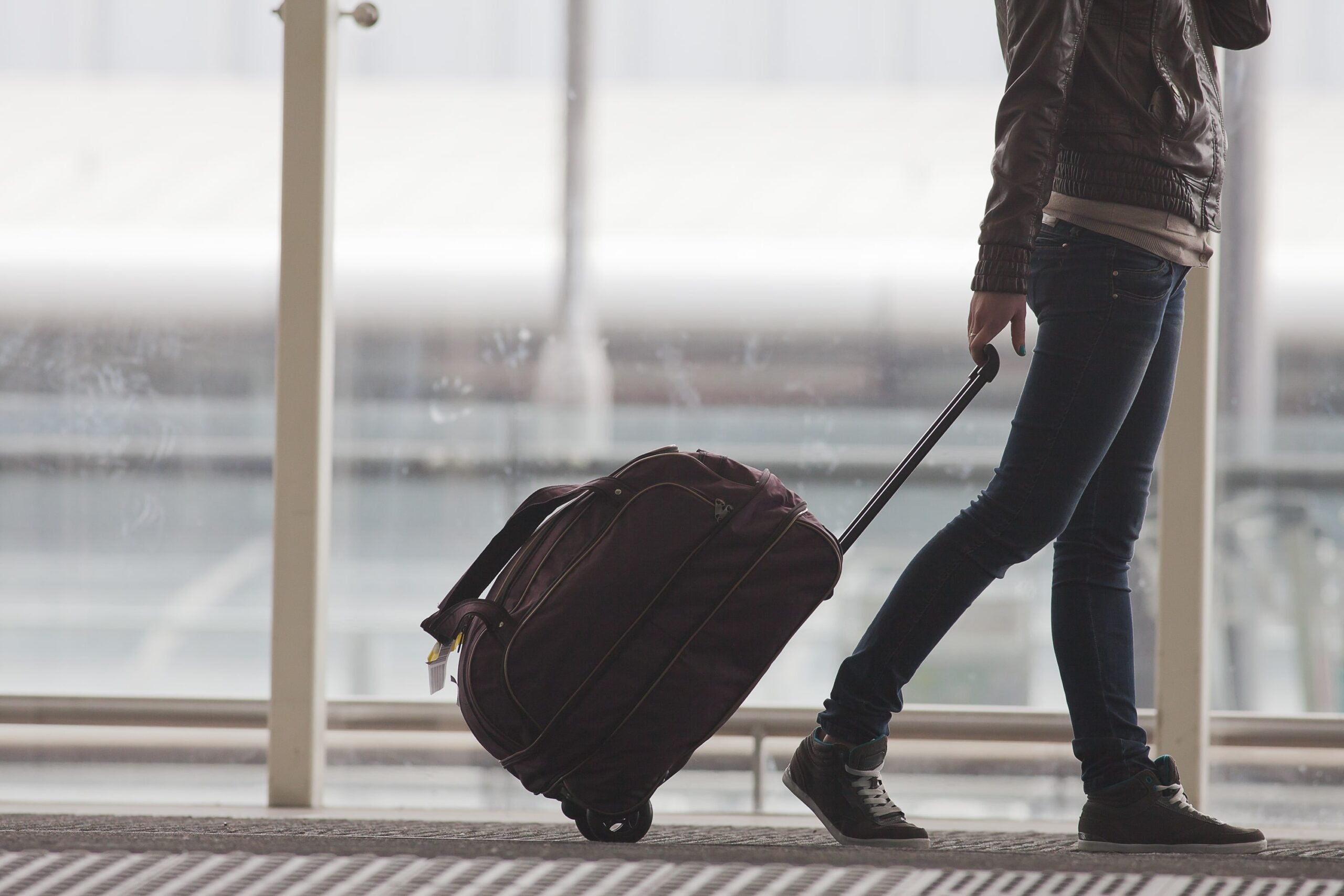Due to the highly transmittable nature of Covid-19 many companies have honed their focus on contactless technology, allowing for a safer, cleaner experience for users. This technology has been implemented into the airport industry via biometrics, contactless boarding options, QR code applications and much more.
Travel technology company Amadeus recently announced its touchless bag drop technology is being trialled at Heathrow Airport. The technology has been installed on six of the airports Auto Bag Drop units – provided by ICM Airport Technics, an Amadeus company – and will be trialled until the end of the year. Using infrared proximity sensors, the technology detects the passenger’s finger above the screen allowing screen interaction to happen without a physical touch.
The inclusion of the technology hopes to provide a safe, quick, and easy solution for passengers at the airport to drop off their luggage without having to interact with screens and kiosks.

Frankie Youd (FY): How did the trial with Heathrow Airport come about? How long is the trial going to be running for?
Rainer Dinkelmann (RD): Heathrow Airport is a long-standing customer, and we are the sole provider of Auto Bag Drop (ABD) units at the airport. In total, ICM Airport Technics has supplied over 270 ABD units at Heathrow since 2016, and the trial builds on this to understand how we can make those bag drop units contactless.
How well do you really know your competitors?
Access the most comprehensive Company Profiles on the market, powered by GlobalData. Save hours of research. Gain competitive edge.

Thank you!
Your download email will arrive shortly
Not ready to buy yet? Download a free sample
We are confident about the unique quality of our Company Profiles. However, we want you to make the most beneficial decision for your business, so we offer a free sample that you can download by submitting the below form
By GlobalDataIn 2019 alone, over five million bags were dropped by passengers, using the existing technology which eliminates the need for agent assistance and speeds up passenger flows. Importantly, this trial will see the ‘proximity sensor’ approach further reduce contact during an airport journey for passengers using any of the six trial ABD units.
It will run until the end of the year, in order to gauge the impact on the passenger experience as well as take-up levels.
Could you explain how the touchless technology works, how does the proximity sensor detect the passenger’s finger?
The proximity sensors work via infrared. This means that when a passenger moves their finger into the infrared field, the sensors can detect the finger and passengers can interact with the screen without touching it.
Enabling passengers to control the screen from a distance of up to 3cm will further bolster the customer experience as airports continue to respond to new requirements for safe travel. We’re excited about this solution because passengers can operate the ABD in much the same way they always have, there’s not much adaptation required by passengers.
Would this technology fully replace the old system, or would it work alongside?
As part of the trial, our existing ABD units are retrofitted with the new sensors, which are placed on top of the screen to provide the infrared sensor layer. Currently, six of our 270 units have been fitted with this new technology, to understand the passenger response and receptiveness as well as any impact on passenger processing times and efficiency. This trial is all about testing the feasibility of a wider contactless retrofit across Heathrow’s ABDs.
Importantly, this retrofit requires no changes to the underlying airline applications or the ‘common use’ platform that supports them, resulting in a fast and straightforward installation.
What are the key benefits that the inclusion of this technology brings not only to the passenger but to the airport as well?
The obvious benefits for the passenger will be a touchless bag drop option, enabling them to drop their luggage quickly, safely, and easily.
For airports the technology is an alternative to rigorous screen cleaning protocols and will help them to meet Covid-19 guidance. Ultimately, the technology will also help to build passenger confidence.
Was this technology in development prior to the pandemic or did the pandemic and the need for more contactless solutions speed up its development?
Amadeus provides a suite of passenger processing technology for airports delivered flexibly from the cloud. This approach reduces complexity, increases agility, and ensures a well-integrated flow of data between different IT systems at the airport and with airlines. Airports were gradually shifting to the cloud before the pandemic, but given the intense operational challenges Covid-19 has presented, we’re seeing a real acceleration in cloud adoption.
Whilst our general approach of helping airports to digitally transform and automate their passenger touchpoints with the cloud remains unchanged, this specific contactless solution is a direct response to the pandemic and passenger demand for a touchless experience.
Are there any other trials currently underway at airports with other contactless technology?
There’s no doubt that the pandemic accelerated the trend towards digitalisation and contactless technologies. Tokyo’s Narita International Airport has implemented our biometric solutions for a fully automated end-to-end biometric experience from check-in to boarding.
Once enrolled with a passport scan, the rollout allows passengers to complete every step of the airport journey document and contact free at the increasing number of service points that are biometrically enabled at Narita.
Are the company currently working on any other technology for future airport inclusion?
At Amadeus we are working on a full range of new solutions that work across every area of the travel industry as we address the urgent need to create a safe travel ecosystem. As part of this, we have introduced new features such as a travel safety companion to our Selling Platform Connect, allowing corporations to search for trips based on Covid-19 travel restrictions rather than just price factors. Our Mobile Messenger has also been developed to help identify the travellers most in need of assistance, as well as keeping them informed with the latest information on mobility restrictions and travel advice.
For the airport specifically, Amadeus Flow, an integrated cloud solution, supports airports in their digital transformations and provide the agility required to respond to Covid-19 travel requirements. For example, using this technology airports can undertake major change projects, such as biometrics, and connect to each airline with minimized complexity.
It has also allowed airports to scale up or down to meet the changing nature of demand over the past 18 months. With the benefit of cloud connectivity, airports can move airline service points around different terminals, or close them altogether, before switching them back on quickly without the delay and complexity experienced with fixed legacy networks.
Through this technology we will continue to help airports to focus on the passenger experience and to innovate more quickly.





Related Company Profiles
Narita International Airport
Amadeus S.A.S.
Heathrow
ICM Airport Technics GMBH
ABD Holding Company, Inc.